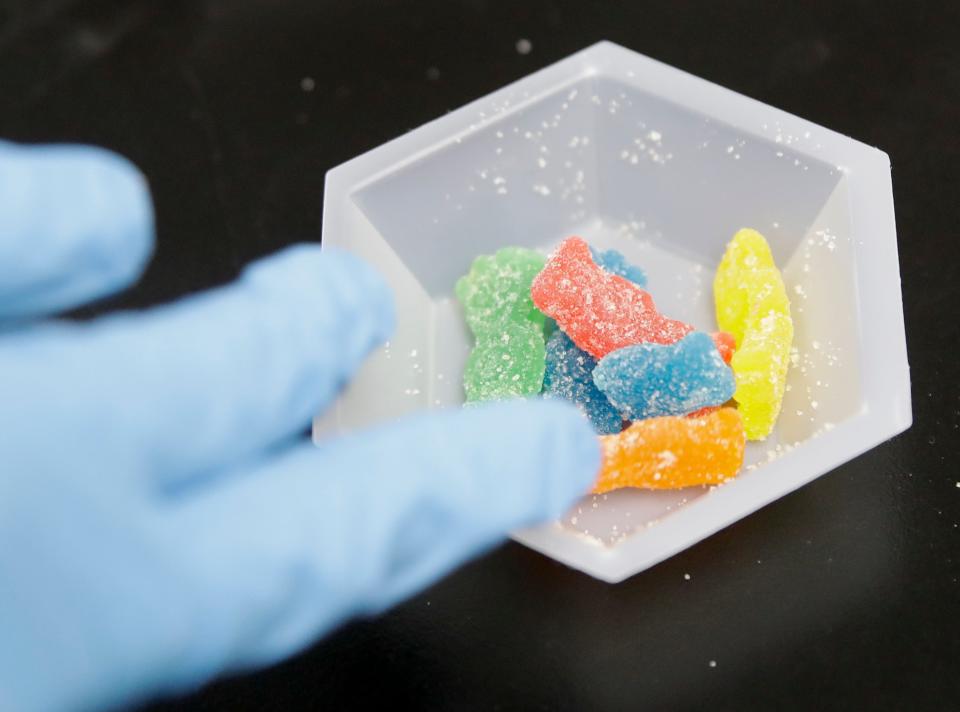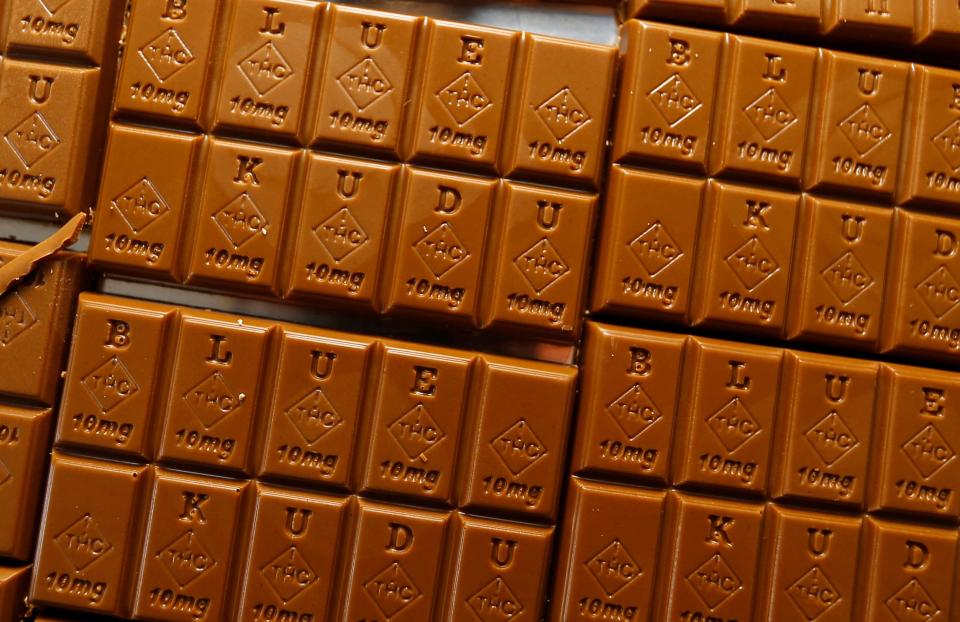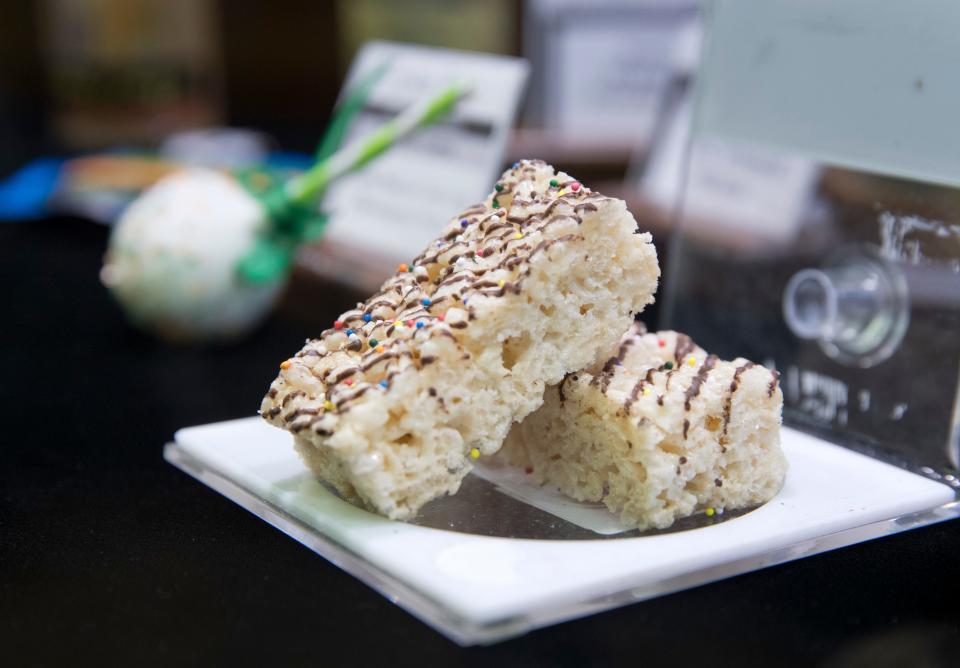More kids are being treated for eating marijuana-laced gummies, other edibles at home
Thousands of young children each year consume and are sickened by marijuana edibles, which may look like ordinary candy or cookies – with nearly one-fourth being admitted to the hospital, a new study finds.
The number of children under the age of 6 – most were aged 2 or 3 – who accidentally ate edible cannabis products rose from 207 cases in 2017 to 3,014 cases in 2021, according to research published this week in the journal Pediatrics.
Cases of children consuming marijuana-laced treats grew as more states passed legislation allowing medical and recreational cannabis products. Currently, 37 states permit use of marijuana for medical purposes with 21 states allowing some adult recreational use.
Lawsuit: To silence critics, plastic surgeon posted fake reviews and had patients sign NDAs
First meteor shower of 2023: How to watch Quadrantids meteor shower peak

What are marijuana edibles?
The availability of edible marijuana products has grown since 2014, when Colorado became the first state to legalize recreational use of marijuana. Among the edibles made with tetrahydrocannabinol (THC), the psychoactive ingredient in marijuana, are gummies, chocolates, lollipops, cookies and other baked goods.
"Many edible THC containing products resemble treats that might easily be mistaken by a child as just another snack," said study co-author Dr. Marit Tweet, an emergency medicine physician and medical toxicologist with the Southern Illinois University School of Medicine, in a statement accompanying the study.
And kids don't realize that each product may contain multiple doses of perhaps 10 milligrams of THC. "A child would not recognize the need to stop after 1 bite/segment/piece," the researchers say. "Given the smaller weight of pediatric patients, a higher milligram/kilogram dose is ingested, which puts children at risk for increased toxicity from these exposures."

How many kids who ate marijuana edibles were admitted to the hospital?
Of the more than 7,000 cases of child exposures to edible cannabis products reported to the National Poison Data System from 2017-2021, the researchers found:
573 kids were admitted to critical care units
1,027 kids were admitted to non-critical care units
2,550 kids were seen in emergency rooms
625 cases refused care/did not go to hospital
2,268 outcome unknown/no follow-up
More than half of the children were toddlers, ages 2 and 3, the study showed. More than 90% got the edibles at home.
What symptoms of cannabis poisoning were seen in kids?
Those kids admitted to critical care units typically had slowed breathing and reduced heart rates, but a few went into a coma, the researchers found.
Other symptoms children experienced:
drowsiness
breathing problems
fast heart rate
vomiting
agitation
confusion
poor muscle control
No deaths were reported during the five years studied.
What's everyone talking about?: Sign up for our trending newsletter to get the latest news of the day
Why are more kids being exposed to THC gummies and other cannabis edibles?
Overall, the number of cases increased as more states legalized medical and recreational cannabis products, Tweet said.
"The problem is likely underreported," she told USA TODAY. "If children ingest these edibles at home and the caregivers do not reach out to the poison centers or go to a healthcare setting where a provider might then call the case in, then that case would go unreported. Additionally if a child did present to a healthcare setting after a mild exposure and the healthcare provider feels comfortable caring for the child without needing input from the poison center, then those cases may also go unreported."
Still, as marijuana became more widely available legally, parents may have felt less stigma seeking help from poison centers and health care providers, Tweet said.
Also, the last two years of the study occurred during the COVID-19 pandemic and day care and school closures could have led to the increased cases and hospitalizations, researchers say.
The results are not surprising, said Dr. Brian Schultz, a pediatric emergency physician at Johns Hopkins Medicine in Baltimore. He previously worked at Children’s National Hospital in Washington, D.C., where he and his colleagues treated kids who had eaten pot edibles “almost on a daily basis,” he told the Associated Press.

What steps can reduce kids exposure to marijuana edibles?
Unintentional marijuana exposure typically happens at home so parents should store any edibles safely and avoid buying them in packages that look like traditional treats or candies, said Kevin Osterhoudt, an attending physician in the Emergency Department and Medical Director of The Poison Control Center at Children's Hospital of Philadelphia on the American Academy of Pediatrics HealthyChildren.org site.
"Never consume marijuana edibles in front of children, either for medical or recreational purposes," he said. "Seeing the products could create temptation for kids."
Locked cabinets that are out of reach of young children are best, Tweet said. And store edibles away from the kitchen or other areas where other foods and snacks are stored or eaten, she said.
The researchers suggest changes to product packaging and labeling, as well as regulating the maximum allowable dose in a package.
Some states such as Illinois require product packaging that does not appeal to children and the total amount of THC allowed per package is limited, Tweet said.
Contributing: The Associated Press
Follow Mike Snider on Twitter: @mikesnider.
This article originally appeared on USA TODAY: More kids in hospitals for eating marijuana edibles, THC-laced treats

